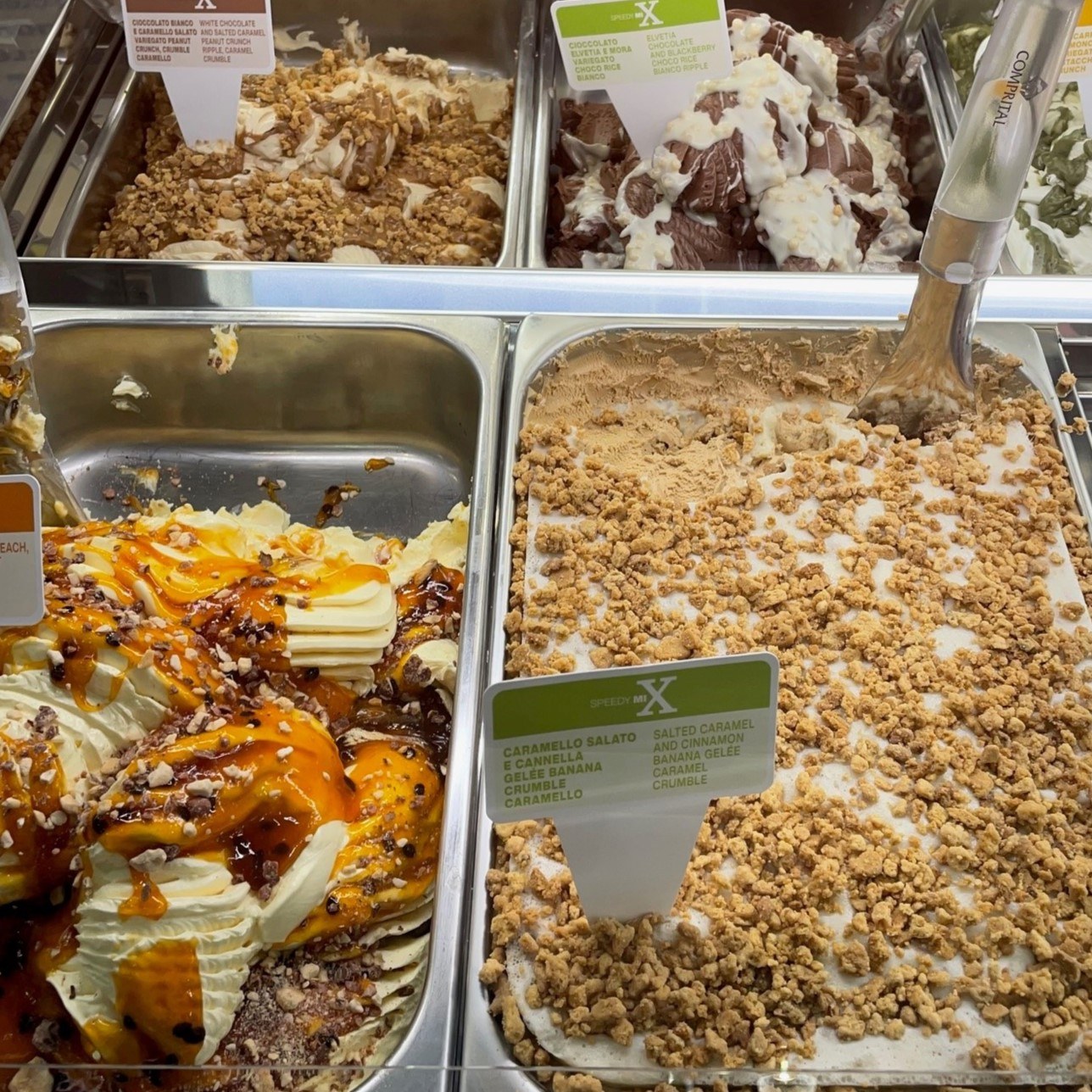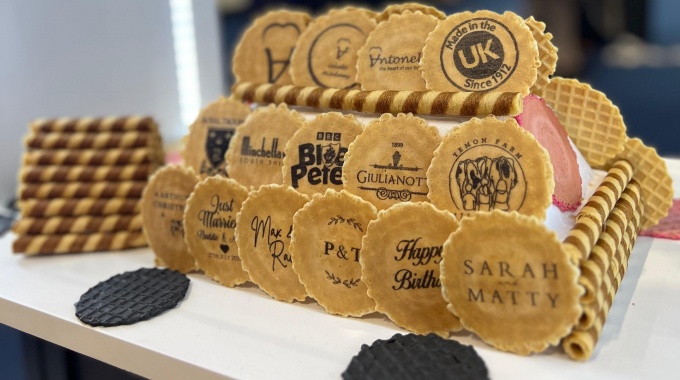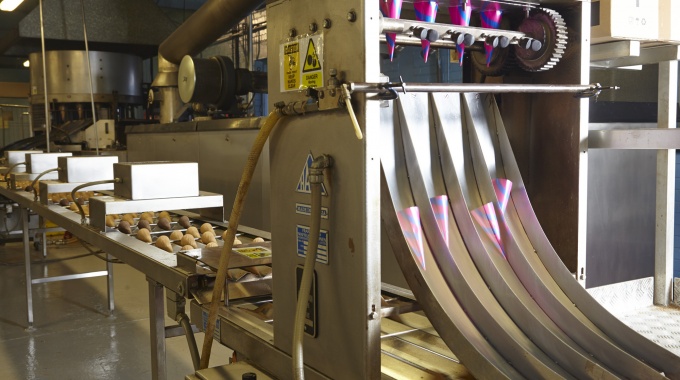Inclusions might seem like a small detail, but they can completely change the character of your gelato. A simple flavour becomes memorable with the right crunch, crumble, or swirl. Whether it’s a ribbon of biscuit crumble through a caramel base or a handful of chocolate-coated honeycomb that adds a satisfying crunch, inclusions are where creativity and technical know-how meet.
Inclusions aren’t just decoration, they add texture, flavour, and visual appeal. They “level up” flavours, creating multi-dimensional experiences that keep customers coming back for more. From a silky scoop with bursts of biscuit to a rustic finish with nuts and fruit, these little additions make a big difference to how your product tastes, feels, and looks.
At Antonelli, we see inclusions as both an art and a science. They help you craft a signature flavour while maintaining texture and quality through the production and storage process. Whether fat-coated for stability or left natural for a rustic look, inclusions deserve the same attention to detail as your base recipes.

Why inclusions matter
The right inclusion can completely transform a gelato. Texture is the most obvious impact, a pleasing crunch or chew gives contrast to the smoothness of the base. But inclusions also bring depth of flavour and visual excitement.
The percentage and type of inclusion often depend on where your product sits in the market. Premium gelato brands tend to feature higher inclusion levels or more sophisticated combinations, while others might use smaller quantities to subtly enhance the base flavour. Either way, inclusions add an extra sensory layer that ripples and flavourings alone can’t achieve.
Fat-coated inclusions – designed for performance
Fat-coated inclusions are the heroes of consistency. They’re designed not only to taste good but to maintain quality and texture throughout.
Here are some of the ways they add value:
- The fat coating acts as a protective barrier. It prevents moisture from the gelato base from seeping into the inclusion, keeping it crunchy and stable.
- It also guards against freeze damage, stopping inclusions from turning rock hard in the freezer or cabinet, a common problem when working with uncoated ingredients.
- They extend the shelf life of the inclusion, meaning it holds its texture and taste for longer.
- Fat-coated inclusions resist clumping, making them easier to work with in ingredient feeders and during continuous production. This makes them ideal for larger-scale operations or anyone looking for reliability and uniformity in every batch.
Examples include fat-coated honeycomb, shortcake, and crumble pieces, as well as chocolate-coated inclusions like malty balls. Each brings something unique to the table, from buttery, biscuit-like notes to rich, cocoa sweetness.
Non-fat-coated inclusions – natural and authentic
While fat-coated inclusions are all about stability, non-fat-coated inclusions bring authenticity and a natural appeal.
Non-fat-coated inclusions can have the following benefits:
- They blend more directly into the base, allowing their flavours to meld and evolve with the gelato. This gives a more integrated, handmade feel.
- They often look more rustic and natural, perfect for small-batch or premium gelato where individuality is part of the appeal. Biscuit crumbs, nuts, vermicelli, and fruit pieces all add visual interest and unique textures.
- They impart flavour in a way that fat-coated inclusions don’t, without the barrier, the inclusion shares its natural taste with the surrounding gelato.
There are challenges, of course. Without protection, moisture migration can soften crunchy elements or cause them to clump. Some inclusions can also become too hard in the freezer, especially if stored for long periods. This makes non-fat-coated inclusions better suited to smaller-scale or artisan production, where control over timing and storage is tighter.
Balancing aesthetics, texture, and practicality
Choosing the right inclusions is about more than flavour preference. It’s a balance between creativity, practicality, and the needs of your operation.
For high-volume or continuous production, fat-coated inclusions usually make the most sense. They’re stable, easy to handle, and offer predictable performance. For smaller producers, non-fat-coated inclusions provide room for creativity and flavour expression, even if they require more careful handling.
Your choice should also consider how inclusions interact with the rest of the recipe. The fat content of your base, your overrun, and even your storage conditions will affect how inclusions behave. Testing is essential to ensure inclusions distribute evenly, stay suspended, and don’t sink or separate.
Presentation is another consideration. A well-placed layer of inclusions in the cabinet can instantly draw attention. Mounding, rippling, and topping all help highlight inclusions, turning flavour into visual storytelling. Pairing smooth ripples with crunchy inclusions creates contrast, both visually and in mouthfeel, that captures customers’ attention.
The power of texture
Whether you’re crafting a smooth hazelnut base with chocolate-coated crunch or layering fruit ripples with biscuit crumbs, inclusions bring your ideas to life. They add variety, character, and the finishing touch that makes every scoop stand out.
Experiment, combine, and play with both coated and non-coated options. With the right balance of science and creativity, inclusions turn great gelato into unforgettable gelato.
At Antonelli we cater to all your gelato needs, we provide inclusions that are the best fit for you and your gelato production. Get in touch with us today and let's discuss how to incorporate the very best inclusions for your business into your products.



